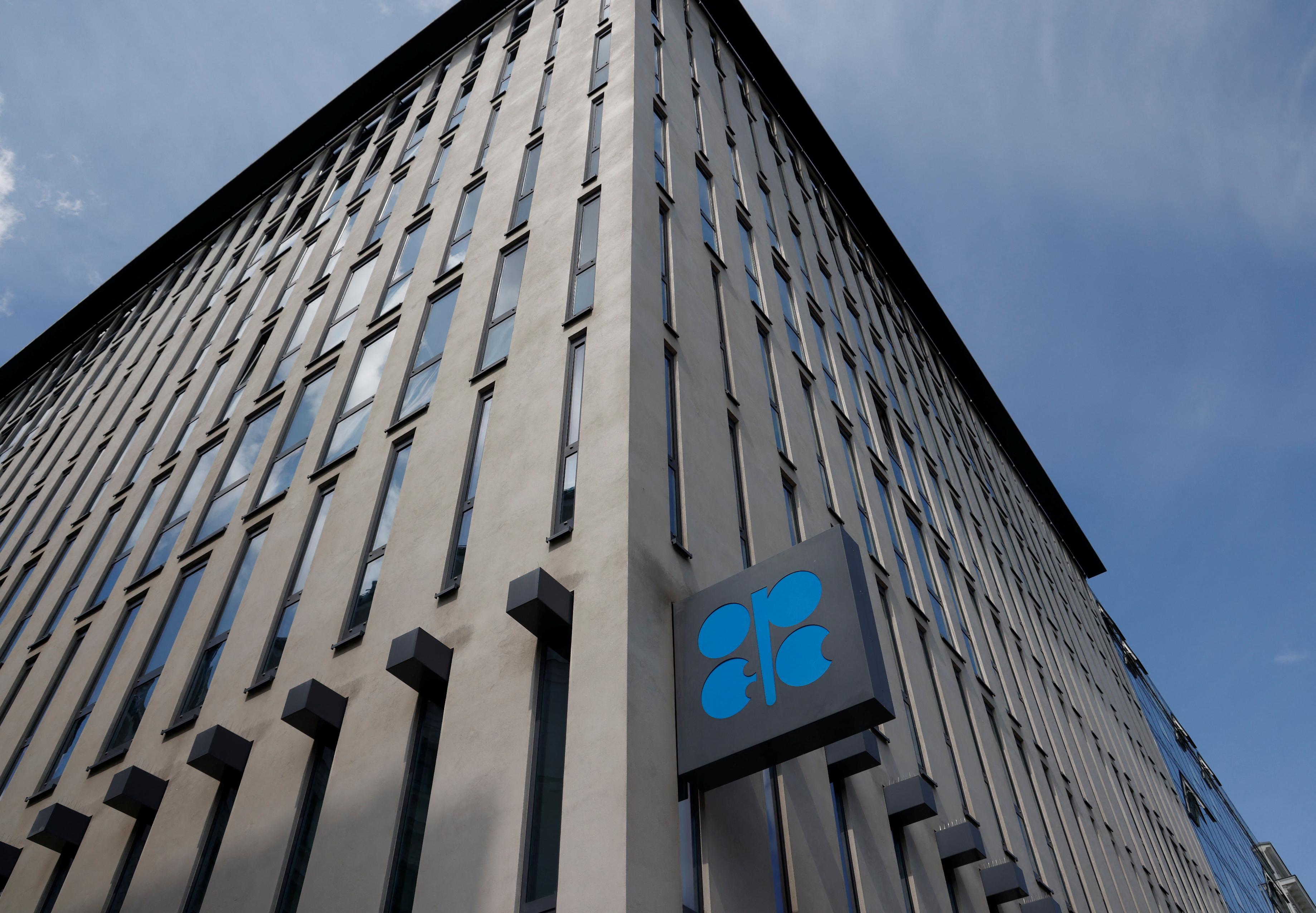
2024-09-02 04:01
LAUNCESTON, Australia, Sept 2 (Reuters) - OPEC+ has two problems and two solutions. The first problem is that crude oil prices are too low for the comfort of most of the members of the group, which pulls together the Organization of the Petroleum Exporting Countries (OPEC) and its allies including Russia. The second issue is that crude demand has so far disappointed the somewhat optimistic forecasts made by OPEC for 2024 growth. The first solution is for OPEC+ to surprise the market and change its mind on increasing output from the fourth quarter onwards. The second solution is to increase output as planned, allow further price weakness and trust that over time the lower cost of the key commodity that powers the global economy will result in faster growth and rising demand. So far the indications are that the first solution is off the table, with sources within the OPEC+ group telling Reuters last week that they still intend to go ahead with easing their production curbs. Eight OPEC+ members are scheduled to boost output by 180,000 barrels per day (bpd) in October, the first stage of unwinding production cuts of 2.2 million bpd, which is around 2% of global daily demand. When the group announced the decision to start increasing output from October, it was against a backdrop of widespread forecasts of strong demand growth for the rest of 2024, largely led by a recovery in China, the world's top crude-importing nation. The initial reaction to the OPEC+ announcement was mildly bullish for crude prices, with global benchmark Brent futures rising from a six-month low of $76.76 a barrel on June 4 to reach $87.85 on July 5. But since then the price has trended downwards, with Brent sliding to $78.80 a barrel at the close on Aug. 30. The weakness continued on the first trading day of September, with the price dropping as low as $76.23 during Asian trade on Monday. What has changed is that there is no real sign of any acceleration in import demand in China, or even more broadly in Asia, while concerns have increased about slowing economies across Europe and North America. The most recent monthly report from OPEC did go a tiny way to recognising the weakness in demand growth, with the group paring its 2024 forecast to 2.11 million bpd, down a modest 140,000 bpd from its prior expectation. OPEC still expects China to provide 700,000 bpd of the total global demand growth, a forecast that looks increasingly out of touch with the realities of the physical market. China's crude imports dropped to 9.97 million bpd in July, the lowest on a daily basis since September 2022, and down from June's 11.3 million bpd. For the first seven months of the year, crude imports were 10.90 million bpd, down 2.9% from the 11.22 million bpd over the same period in 2023. This means that China's oil imports are about 320,000 bpd lower in the first seven months of 2024 compared with the same period last year. LONG-TERM HOPE It seems increasingly unlikely that China will meet OPEC's expectations, and it also seems improbable that the rest of the world will see demand growth in line with the producer group's forecasts. If demand growth does disappoint OPEC's expectations, where does that leave the producer group and its allies within OPEC+ as far as output policy goes. The short-term option is to try and surprise the market by abandoning the commitment to ease production curbs from October. This may have the immediate effect of boosting prices by squeezing short positions in the paper market. But any boost will likely be short-lived before the focus returns to the state of demand and the atmosphere of uncertainty in many parts of the world, including the Middle East and what's shaping up to be a tightly-contested presidential election in the United States. It may be the better option for OPEC+ to take a slightly longer term view and put up with lower crude prices in the interim. If the group does lift output as planned from October onwards and demand does continue to disappoint, it's likely that oil prices will come under further downward pressure. But this may end up being a good thing insofar as lower prices will help inflation rates to ease, which in turn will encourage more global central banks to ease monetary policy. This in turn will help economic growth to recover, which will result in stronger oil demand growth. Lower prices may also help curb some supply, especially high-cost shale oil in the United States. Whether OPEC+ is prepared to tolerate lower prices for a period of six months to a year remains to be seen. But the current strategy of cutting output hasn't resulted in prices rising as much as the group probably would have hoped. Rather it has kept prices higher than they probably should be for the state of the global economy, and also likely worked against a faster bounce back for world growth. The opinions expressed here are those of the author, a columnist for Reuters. Sign up here. https://www.reuters.com/business/energy/opec-has-oil-price-demand-problems-it-should-solve-demand-russell-2024-09-02/

2024-09-02 03:47
JAKARTA, Sept 2 (Reuters) - Indonesia plans to sign business deals worth $3.5 billion with African countries as it hosts the second Indonesia-Africa Forum in the resort island of Bali, the Southeast Asian country's president said on Monday. The forum, which will run until Sept. 3, is aimed at enhancing economic cooperation as Indonesia seeks to expand its export markets. "The partnership between Indonesia and Africa so far has significantly increased trade volumes and trade agreements," President Joko Widodo said during his opening speech for the forum on Monday. Several memorandums of understanding expected be signed at the event include a geothermal project between state power utility Perusahaan Listrik Negara and the Tanzania Electric Supply Company (TANESCO), as well as an agreement between Indonesian pharma company Bio Farma and Ghana's Atlantic Lifesciences Ltd, Indonesia's foreign ministry said in a statement on Sunday. The ministry did not provide further details. Indonesian authorities have said they would increase surveillance in airports during the forum to prevent the spread mpox. The mpox outbreak was among topics discussed during the Indonesia-Africa Parliamentary Forum over the weekend, state news Antara reported. Sign up here. https://www.reuters.com/business/indonesia-expects-sign-35-bln-deals-africa-forum-2024-09-02/

2024-09-02 02:54
MUMBAI, Sept 2 (Reuters) - The Indian rupee is expected to weaken at open on Monday after U.S. inflation data indicated that the Federal Reserve will not opt for a larger rate cut at this month's meeting. The 1-month non-deliverable forward indicated that the rupee will open at 83.90 to the U.S. dollar, down from 83.8625 in the previous session. The local currency was in the 83.80 to 83.96 range last week amid likely equity inflows, possible central bank intervention and dollar payments by importers. "I expect a similar range to persist this week, with risks balanced on the upside (for dollar/rupee pair)," a currency trader said. "The range hopefully expands next week, once the U.S. jobs data is out." ASIAN CURRENCIES STRUGGLE Asian currencies were down to begin the week after recent data points indicated that the Fed might deliver a more conventional 25 basis points rate cut at the Sept. 17-18 meeting. On Friday, data showed that the headline and core PCE index rose 0.2% month-on-month in August, in line with expectations. This followed the better-than-expected revisions to the U.S. GDP and a slight decline in U.S. initial jobless claims. Amid the data, investors are pricing in a less than 1-in-3 probability that the Fed will cut rates by 50 basis points in about two weeks' time. The U.S. August non-farm payrolls data due this Friday could change that. After Fed Chair Jerome Powell's comments at Jackson Hole, the U.S. labour market data is seen as critical to gauge the size of rate cuts. "The Fed has essentially guided that this is where they're looking most intently and will not tolerate any further weakness," Chris Weston, head research at broker Pepperstone, said. A weak read, say below 130,000, will likely see the rates market move nearer to price in a 50 bp cut, he said. Economists polled by Reuters expect non-farm payrolls to rise by 165,000. KEY INDICATORS: ** One-month non-deliverable rupee forward at 83.97/83.99; onshore one-month forward premium at 7 paise ** Dollar index at 101.67 ** Brent crude futures down 0.8% at $76.3 per barrel ** Ten-year U.S. note yield at 3.91% ** As per NSDL data, foreign investors bought a net $1,731.6 mln worth of Indian shares on Aug. 29 ** NSDL data shows foreign investors bought a net $28.9 mln worth of Indian bonds on Aug. 29 Sign up here. https://www.reuters.com/markets/currencies/rupee-decline-after-us-data-suggests-larger-fed-rate-cut-unlikely-2024-09-02/

2024-09-02 00:33
OPEC set to increase production from October Oil exports at major Libyan ports halted China manufacturing activity slowed in August Sept 2 (Reuters) - Oil prices edged higher on Monday, recovering some losses from late last week, as Libyan oil exports remained halted and concerns about higher OPEC+ production from October eased. U.S. West Texas Intermediate crude rose 49 cents, or 0.7%, to $74.04 by 1924 GMT. Brent crude futures settled up 59 cents, or 0.8%, at $77.52 a barrel. Trading volumes were light as Monday marked a public holiday in the U.S. market. On Friday Brent and WTI lost 1.4% and 3.1%, respectively. Oil exports at major Libyan ports were halted on Monday and production curtailed across the country, six engineers told Reuters, continuing a standoff between rival political factions over control of the central bank and oil revenue. The country's National Oil Corp. (NOC) also declared force majeure on El Feel oil field from Sept. 2. “The current disturbances in Libya's oil production could provide room for added supply from OPEC+. But these fluctuations have become quite normal over the last few years, meaning any outages will probably be short-lived; with the news flow indicating signals for a restart of production have already been given," said Bjarne Schieldrop, chief commodity analyst at SEB. Libya's Arabian Gulf Oil Company resumed output of around 120,000 barrels per day (bpd) on Sunday, to feed a power plant at the port of Hariga. The Organization of the Petroleum Exporting Countries (OPEC) and its allies, together known as OPEC+, is set to proceed with planned increases to oil output from October, six sources from the producer group told Reuters. Eight OPEC+ members are scheduled to boost output by 180,000 barrels per day (bpd) in October as part of a plan to begin unwinding their most recent supply cuts of 2.2 million bpd while keeping other cuts in place until the end of 2025. News of increased production helped push oil prices lower last week but the scale of the sell-off was overdone, said Phil Flynn, an analyst at Price Futures Group. "The market over-reacted to how much supply is coming on and now it seems like the market has put that report into perspective," Flynn said. However Brent and WTI have posted losses for two consecutive months as U.S. and Chinese demand concerns have outweighed recent disruptions in Libya and supply risk related to conflict in the Middle East. More pessimism about Chinese demand growth surfaced after an official survey showed on Saturday that manufacturing activity sank to a six-month low in August as factory gate prices tumbled and owners struggled for orders. Sign up here. https://www.reuters.com/business/energy/oil-extends-losses-prospect-higher-opec-supply-2024-09-02/

2024-09-02 00:28
European stocks and U.S. futures slip Payrolls data could decide size of Fed rate cut Dollar dips and euro rises September traditionally a weak month LONDON/SYDNEY, Sept 2 (Reuters) - Share markets fell slightly on Monday as investors braced for a data-packed week culminating in a U.S. jobs report that could decide whether a rate cut expected this month will be regular or super-sized. Survey data released on Saturday showed Chinese manufacturing activity sank to a six-month low in August, and data on Monday showed euro zone factories are also still struggling. Wins for the populist parties in German state elections added a fresh layer of political uncertainty in European markets, while a holiday in the United States and Canada made for thin liquidity. Europe's STOXX 600 index (.STOXX) , opens new tab fell 0.21%, after hitting a record high on Friday. Germany's DAX (.GDAXI) , opens new tab and Britain's FTSE 100 (.FTSE) , opens new tab were down 0.1% and 0.2% respectively. "European equities have opened on a weaker footing owing to weaker economic data from China," said Aneeka Gupta, equity strategist at WisdomTree. "The industrials and consumer discretionary sector led the declines." The dollar index , which tracks the currency against six peers, was down very slightly at 101.68 after hitting a two-week high overnight. The U.S. currency climbed 0.55% against the yen to 146.96 . "We are seeing some natural caution at the beginning of a critical month for markets, with the Fed set to start its interest rate cutting cycle," said Ben Laidler, head of equity strategy at Bradesco BBI. "Markets made a dramatic recovery from the early August flash sell-off but now face seasonally by far the weakest performance month of the year." Chinese stocks (.CSI300) , opens new tab lost 1.7%, led by losses in real estate after a survey showed home prices growth had slowed. Shares of New World Development (0017.HK) , opens new tab, a major Hong Kong property developer, dived 14% after it estimated a net loss. Futures for the U.S. S&P 500 index (.ESc1) , opens new tab were down 0.1%, while those for the tech-laden Nasdaq 100 (.NQcv1) , opens new tab were flat. U.S. stock markets were closed for Labor Day on Monday and Treasuries were untraded. "We're always a bit cautious when we're trading at all time highs and when earnings expectations continue to be fairly lofty in the U.S. in particular," said said Carl Hammer, head of asset allocation at lender SEB. The big event of the week will be the U.S. non-farm payrolls report on Friday, which is expected to show the economy added 165,000 jobs in August, up from 114,000 in July. Traders currently think a September Federal Reserve rate cut is nailed on and see a 33% chance that it could be an outsized 50-basis point reduction, but that could shift on Friday. The weak July jobs report helped spark a sell-off in global stocks at the start of August, although the S&P 500 has since rebounded to sit 0.4% off a record high. Germany's 10-year bond yield rose to its highest in a month at 2.349%, up 6 basis points. Pressure mounted on German Chancellor Olaf Scholz after the far-right Alternative for Germany (AfD) won its first regional election. September has recently been a down month for stocks and bonds, analysts said, perhaps adding to the caution on Monday. Deutsche Bank analysts said the S&P 500 and STOXX 600 have lost ground in each of the last four Septembers, while global bonds have fallen in the last seven. Also important this week will be U.S. survey data, job openings figures, weekly jobless claims and the Fed's beige book on current economic conditions. Oil prices were little changed after falling in recent days. Brent crude held steady at $76.91 a barrel, down more than 5% from a week earlier. Sign up here. https://www.reuters.com/markets/global-markets-wrapup-1pix-2024-09-02/

2024-09-01 23:04
Increase effective from Nov. 1 Tax rate would be among highest in the world Government says change will help shift to renewable energy LONDON, Sept 2 (Reuters) - British government plans to increase a windfall tax on North Sea oil and gas producers would lead to a nearly 12 billion pound ($16 billion) drop in revenue to the state and accelerate a decline in output, an industry group said on Monday. The Labour government, elected in July, has said the changes will help to achieve a ramp-up in renewable power and shift from oil and gas to reduce carbon emissions and help curb global warming. Industry group Offshore Energies UK forecast the changes would reduce tax revenue by 12 billion pounds between 2025 and 2029 compared to the current tax regime. Capital investment in the sector over the period is expected to fall to 2.3 billion pounds from around 14 billion pounds, OEUK said. The proposed tax changes "will trigger an accelerated decline of domestic (oil and gas) production, and a corresponding reduction in taxes paid, jobs supported, and wider economic value generated," OEUK CEO David Whitehouse said in a statement. North Sea focused NEO Energy said the fiscal and regulatory uncertainty would slow investment across its portfolio. NEO owns half of the Buchan Horst development project in the UK North Sea with Serica Energy and Jersey Oil & Gas owning 30% and 20%, respectively. Production in the mature North Sea basin has declined from a peak of 4.4 million barrels of oil equivalent per day (boed) at the start of the millennium to around 1.3 million boed today. The North Sea Transition Authority (NSTA) regulator has forecast it will decline to less than 200,000 boed by 2050. Shortly after its election, Britain's Labour government said it would increase the Energy Profits Levy (EPL) to 38% from 35% starting Nov. 1, bringing the headline rate of tax on oil and gas activities to 78%, among the highest in the world. Its duration was also extended by a year to March 2030. The changes will also include scrapping the levy's 29% investment allowance, which lets companies offset tax from capital that is re-invested. A Treasury spokesperson said: "We are committed to maintaining a constructive dialogue with the oil and gas sector to finalise changes to strengthen the windfall tax, ensuring a phased and responsible transition for the North Sea." ($1 = 0.7606 pounds) Sign up here. https://www.reuters.com/business/energy/britain-may-lose-16-billion-with-north-sea-tax-changes-industry-body-says-2024-09-01/
